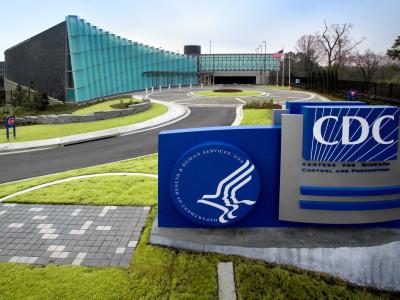ACIP: Benefits of COVID-19 vaccines outweigh risks
Today Morbidity and Mortality Weekly Report (MMWR) published a summary of the findings of the Advisory Committee on Immunization Practices (ACIP) on adverse events related to the three COVID-19 vaccines approved for emergency use in the United States, two-dose mRNA vaccines from Pfizer and Moderna, and a single shot adenovirus vaccine from Johnson & Johnson.
Since this spring, ACIP has met three times to discuss associations between the vaccines and adverse events, including myocarditis after the mRNA vaccines, and Guillain-Barré syndrome (GBS) and thrombosis with thrombocytopenia syndrome (TTS) after the Johnson & Johnson vaccine.
On July 22, ACIP met and concluded that the benefits of all vaccines outweighed the risk of adverse outcomes.
The group shared per million doses of Johnson & Johnson vaccine administered to males ages 50 to 64 years, 1,800 hospitalizations, 480 intensive care unit (ICU) admissions, and 140 deaths attributable to COVID-19 could be prevented, compared with 14 to 17 GBS cases and 1to 2 TTS cases.
For males ages 18-29, 9,600 COVID-19 cases per million doses of mRNA vaccine could be prevented, and 22 to 27 cases of myocarditis could be expected.
"Based on a comprehensive review of existing data, in the context of ongoing transmission of SARS-CoV-2, the virus that causes COVID-19, in the United States as of July 2021, ACIP concluded that 1) the benefits of vaccinating all recommended age groups with either the Janssen COVID-19 vaccine or mRNA COVID-19 vaccine outweigh the risks for vaccination, including the risks for GBS and TTS after Janssen COVID-19 vaccination, or myocarditis after mRNA COVID-19 vaccination; 2) continuing safety monitoring of serious adverse events after COVID-19 vaccination is critical; and 3) providers and the public should be informed about these potential harms and the use of COVID-19 vaccines," the group concluded.
Aug 10 MMWR study
Study finds high number of AMR genes in healthy Vietnamese kids, adults
A small genomic study in Vietnam found a high abundance of antimicrobial resistance (AMR) genes in the gut microbiomes of healthy adults and children, with very young children having the highest abundance, researchers reported today in the Journal of Infectious Diseases.
Hypothesizing that the gut microbiome could be a major reservoir of AMR genes in Vietnam, a country with high rates of resistant pathogens, the researchers performed shotgun metagenomic sequencing on 42 fecal samples from 21 children and 21 adults in Ho Chi Minh City. Participants had no known viral, bacterial, or parasitic gastrointestinal infection, no record of diarrheal episodes in the previous 6 months, and no antimicrobial use in the previous 3 months. Participants were separated into three groups for analysis: 0 to 23 months, 2 to 5 years, and adults.
In total, 132 AMR genes were identified, with MLS (macrolide, lincosamide, and streptogramin) and tetracycline resistance genes identified in more than 95% of samples, and 48 different beta-lactamase genes identified. Several genes associated with extensively drug-resistant pathogens, including the blaCTX-M gene, were detected. An overall comparison of AMR gene abundance found that children in the 0 to 23-month group displayed lower microbial diversity but possessed a greater number of AMR genes compared with the other age groups, with a median number 31 AMR genes, compared with 25 in the 2 to 5-year-old group and 21 in the adults.
The study authors suggest that children under 2 may have the highest abundance of AMR genes because they are the most likely to receive antimicrobials when ill and the most likely to be infected with an enteric pathogen.
"Our data highlight the high abundance of AMR genes in the gut microbiome of healthy adults and children, which may play a role in driving antibiotic resistance in enteric pathogens," they write. "We need to better understand the mechanisms driving microbial diversity and the selective pressure maintaining resident AMR genes in those from LMICs [low- and middle-income countries]."
Aug 10 J Infect Dis abstract
Polish minks show new SARS-CoV-2 variant
Fifteen of 91 minks (17%) on a Polish mink farm tested positive for a novel variant of SARS-CoV-2, according to an Emerging Infectious Diseases study yesterday.
The researchers sampled all minks culled for pelting on Nov 17, 2020, at one farm in Pomorskie Voivodeship in northern Poland. None displayed respiratory symptoms, according to the owner, but 15 were diagnosed as having SARS-CoV-2.
Genome analysis via amplicon-based nanopore sequencing and Illumina showed the infecting SARS-CoV-2 variant included two mutations in the spike protein (G757 and C1247F), which have not been seen simultaneously in any of the SARS-CoV-2 sequences in the GISAID database. The analysis suggests that the variant diverged from a common ancestor on Sep 31, 2020, or evolved on its own after virus introduction to the farm on Oct 4, 2020.
"We believe that a country-scale biomonitoring program should be activated as soon as possible to prevent the fur production sector from being a reservoir for future spillover of SARS-CoV-2 to humans," the researchers write. They note that, since their sampling, a farm employee may have experienced possible zoonotic spillover of the virus.
Last year, when farmed minks were diagnosed as having SARS-CoV-2 in the Netherlands and Denmark, both countries culled all farmed minks within their borders, with Denmark killing up to 17 million. According to the researchers, Poland has about 6.3 million mink on 354 active farms. Animal health experts have said SARS-CoV-2 on mink farms poses a high risk to humans, who can contract the variants from mink, and other wildlife.
Aug 9 Emerg Infect Dis study














